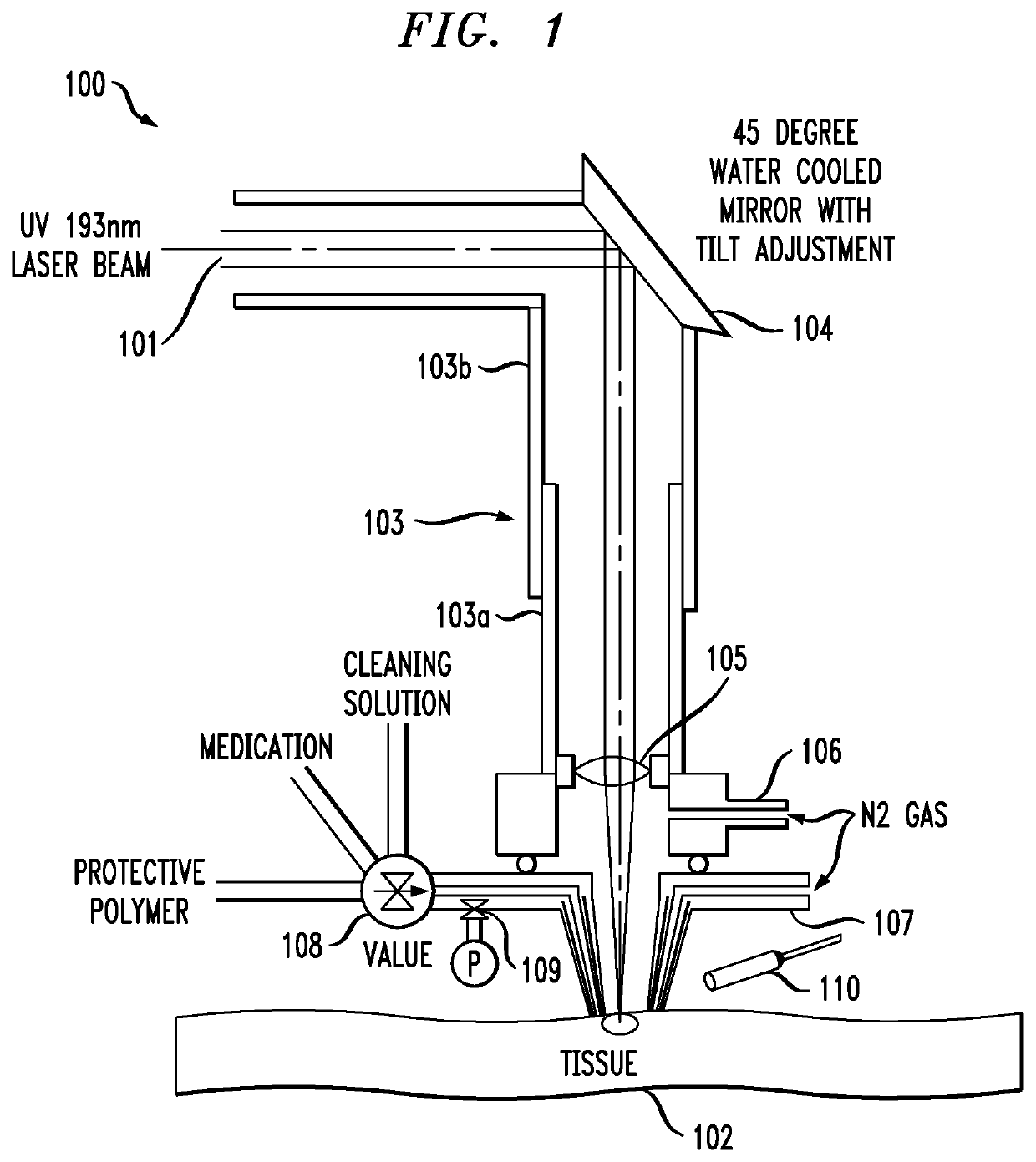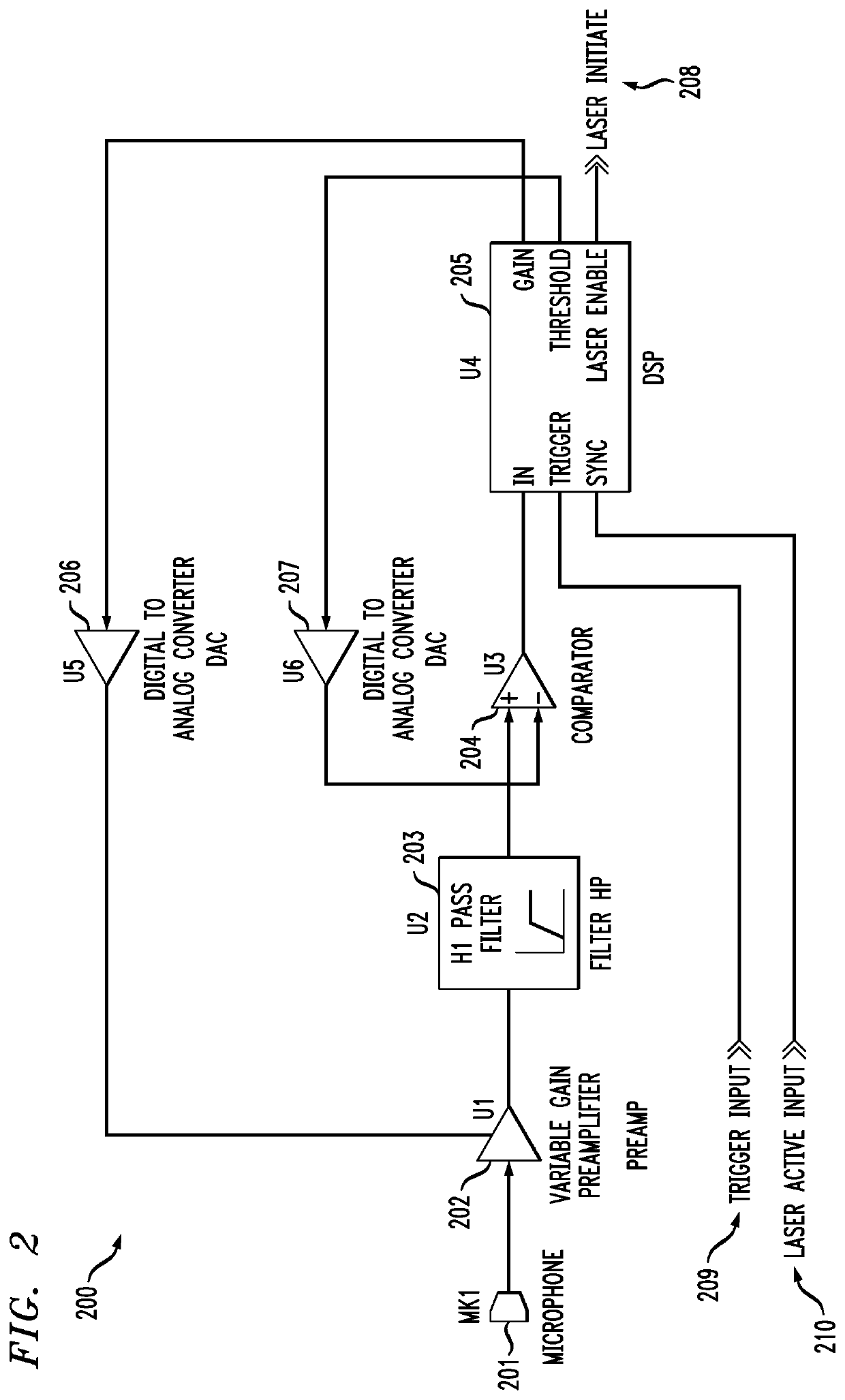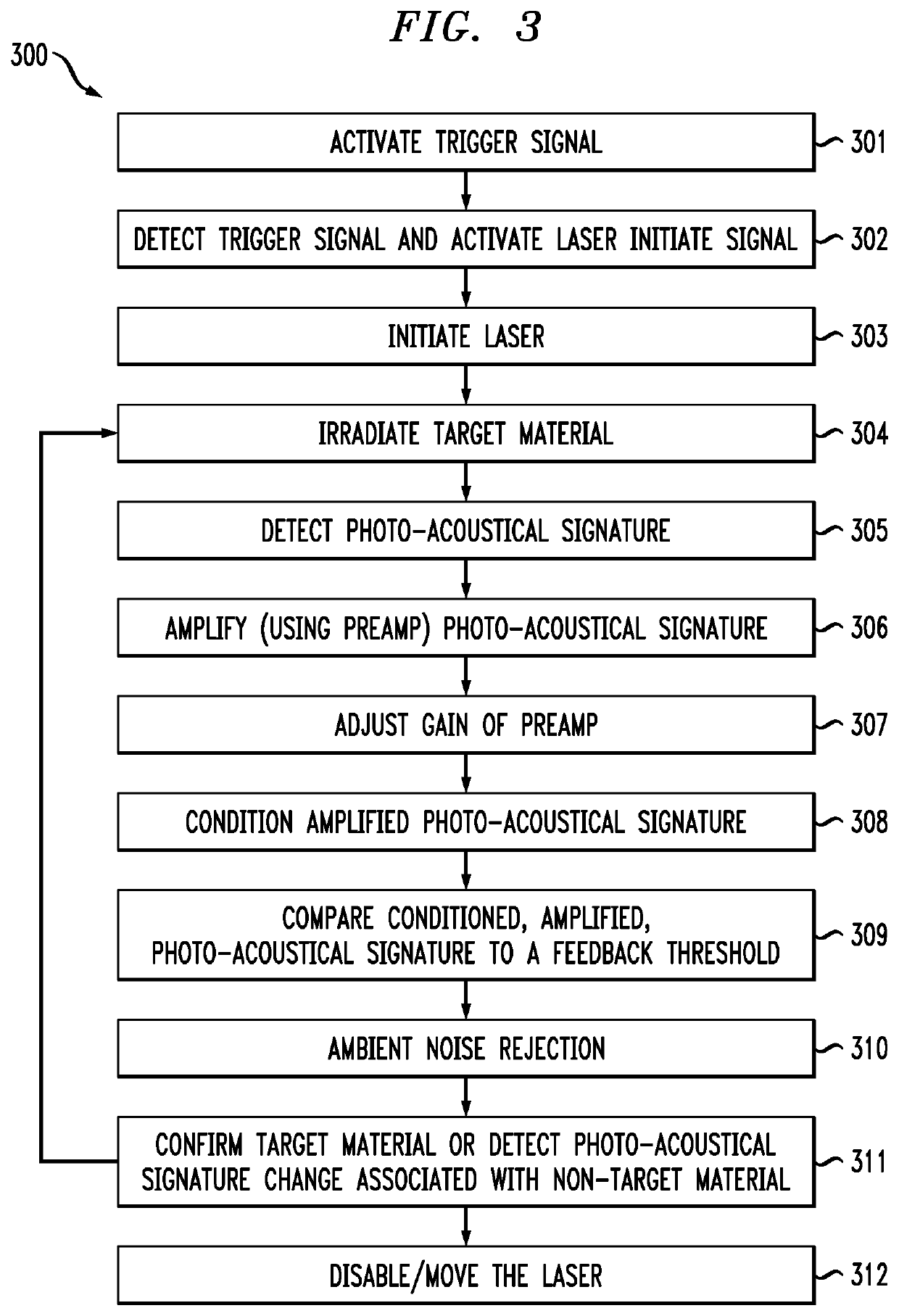Laser-assisted treatment of pachyonychia congenita
a technology of pachyonychia congenita and laser assisted treatment, which is applied in the field of laser assisted treatment of pachyonychia congenita, can solve the problems of significant side effects, abnormal keratin production of nails, and intraoral cavity, and achieves great precision
- Summary
- Abstract
- Description
- Claims
- Application Information
AI Technical Summary
Benefits of technology
Problems solved by technology
Method used
Image
Examples
Embodiment Construction
[0024]Pachyonychia Congenita (PC) is a genetic autosomal dominant skin disorder. PC is caused by a mutation in genes responsible for production of keratins. Keratins are tough, fibrous proteins that form filaments to support skin cells and give them shape and strength, helping these skin cells handle pressure and stretching. With PC, the filaments do not form properly resulting in abnormal keratin production of the nails, palms, soles, and intraoral cavity, and a hyperkeratotic layer of external tissue that can result in significant painful disabilities.
[0025]Current treatments of PC with drugs show effectiveness, but with significant side effects. In particular, transdermal introduction of medication is excruciatingly painful, often requiring anesthesia.
[0026]According to an embodiment of the present disclosure, a method of penetrating dry keratin (e.g., on the soles of the feet) includes irradiating the keratin with a pulsed argon fluoride (ArF) excimer laser to create orifices te...
PUM
 Login to View More
Login to View More Abstract
Description
Claims
Application Information
 Login to View More
Login to View More - R&D
- Intellectual Property
- Life Sciences
- Materials
- Tech Scout
- Unparalleled Data Quality
- Higher Quality Content
- 60% Fewer Hallucinations
Browse by: Latest US Patents, China's latest patents, Technical Efficacy Thesaurus, Application Domain, Technology Topic, Popular Technical Reports.
© 2025 PatSnap. All rights reserved.Legal|Privacy policy|Modern Slavery Act Transparency Statement|Sitemap|About US| Contact US: help@patsnap.com



